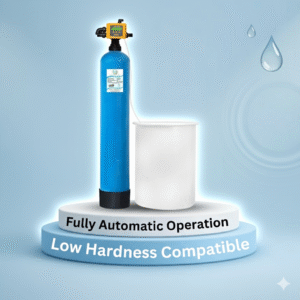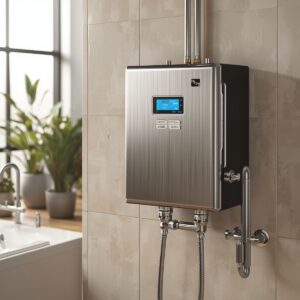What is a Rotameter? Everything You Need to Know
A rotameter is a simple yet highly effective device used to measure the flow rate of liquids and gases in a closed tube. It is one of the most widely used flow measurement instruments in various industries due to its reliability, low cost, and ease of use. Whether you’re working in a water treatment plant, a chemical lab, or an HVAC system, understanding how a rotameter works can help you optimize your processes efficiently.
In this blog, we’ll dive deep into the working principle, applications, advantages, and FAQs surrounding rotameters. This guide is also SEO-optimized for the keyword “Rotameter” to ensure better visibility online for those searching for accurate flow measurement tools.
How Does a Rotameter Work?
A rotameter operates on a variable area flow meter principle. It consists of a vertically mounted, tapered tube and a float inside that tube. When fluid flows through the tube, it lifts the float. The float moves up and down depending on the flow rate. The height of the float is directly proportional to the flow rate, allowing the user to read the value directly on the scale.
Key Components of a Rotameter:
Tapered tube (usually glass or plastic)
Float (made of metal, glass, or plastic)
Graduated scale
Inlet and outlet ports
Types of Rotameters
Rotameters come in various types depending on the application and fluid type:
Glass Tube Rotameter – Ideal for visual monitoring and used in labs.
Plastic Tube Rotameter – Suitable for corrosive chemicals.
Metal Tube Rotameter – Designed for high-pressure or high-temperature applications.
Purge Rotameter – Used in low flow applications for gas purging systems.
Smart Rotameter – Comes with digital displays and remote monitoring capabilities.
Applications of Rotameter
Rotameters are widely used in industries such as:
Water treatment plants
Chemical and pharmaceutical manufacturing
Food and beverage industry
HVAC and refrigeration systems
Oil and gas
Laboratories
In the water treatment industry, rotameters help monitor flow rates for water softeners, RO systems, and dosing pumps, ensuring proper treatment and chemical mixing.
Benefits of Using a Rotameter
Accurate and direct flow reading
No external power needed
Easy to install and maintain
Cost-effective
Customizable for a wide range of applications
Available in various materials based on chemical compatibility
Rotameter in Water Treatment Systems
In the water treatment process, precise flow measurement is crucial for dosing chemicals and monitoring system performance. Pearl Water Technologies uses high-quality rotameters in its RO and filtration systems to ensure accurate measurement of water flow. This not only enhances system efficiency but also minimizes wastage and ensures compliance with industry standards.
When you’re choosing a rotameter for water treatment, make sure it is made of corrosion-resistant material and calibrated according to the flow range you need.
How to Choose the Right Rotameter?
While selecting a rotameter, consider the following factors:
Type of fluid: Is it liquid or gas? Clean or corrosive?
Flow rate range: Check your minimum and maximum flow requirements.
Pressure and temperature: Ensure compatibility with your system’s conditions.
Material: Choose between glass, plastic, or metal depending on the fluid.
Mounting position: Usually vertical, but special models can be mounted horizontally.
Maintenance Tips for Rotameter
Regularly clean the rotameter tube to avoid scaling or clogging.
Check for float obstruction or damage.
Avoid sudden surges in flow that may damage the float.
Calibrate the rotameter if used in critical applications.
FAQs About Rotameter
Q1. What is a rotameter used for?
A rotameter is used to measure the flow rate of liquids or gases in a closed tube. It is commonly used in water treatment plants, laboratories, chemical industries, and HVAC systems.
Q2. Is a rotameter accurate?
Yes, a rotameter provides reliable and accurate readings, especially for low to medium flow rates. For more precision, some models come with digital indicators.
Q3. Can a rotameter be used for both liquids and gases?
Yes, rotameters can measure both liquid and gas flow, but you must ensure that the rotameter is specifically calibrated for the type of fluid being used.
Q4. Does a rotameter need power?
No, traditional rotameters do not require any external power. They operate purely based on the mechanical movement of the float inside the tapered tube.
Final Thoughts
A rotameter is a reliable, low-maintenance, and cost-effective device for measuring fluid flow. Its simplicity in design and versatility in application make it one of the most preferred tools across industries. Whether you are looking to monitor flow in an RO plant or control gas flow in a laboratory, a properly selected and calibrated rotameter can be your best ally.
If you’re looking for durable, high-quality rotameters, explore our range at Pearl Water Technologies – engineered for precision and performance.


